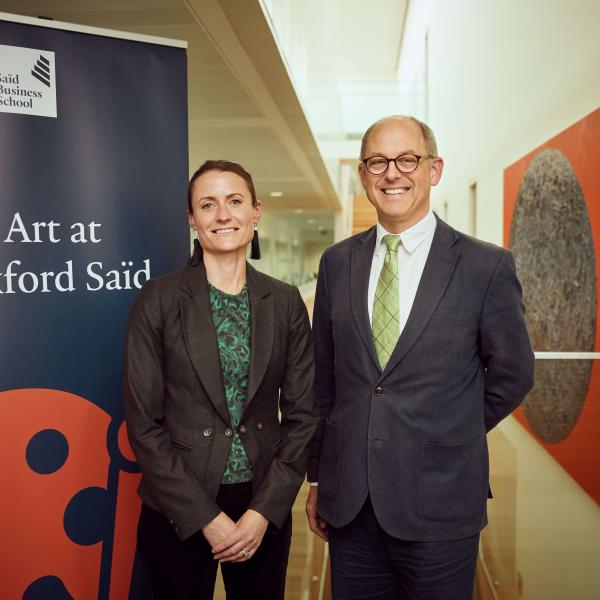About the event
Freya Stewart from the Fine Art Group discussed what happens when art is used as collateral.
On 15 May 2019, ‘Rabbit’ by Jeff Koons sold at auction for a record-breaking $91.1 million. This small, somewhat kitsch, stainless steel sculpture inspired by a child’s toy became the world’s most expensive work by a living artist.
But is $91.1 million really what it’s worth? If there is anything that Oxford Saïd’s series of talks on Art and Business has taught us, it is that the concept of ‘value’ in art is subjective, contextual, and negotiated.
The Fine Art Group’s Freya Stewart, CEO of Art Lending and Group General Counsel, gave us a further insight into the complexities of value during a talk on 9 May 2019.
The art financing arm of The Fine Art Group does exactly what it says on the tin. It provides short-term (usually up to about three years) loans secured solely on an art asset. ‘We are not a bank: we are a specialised lender,’ Stewart stressed. ‘As such we are simply underwriting the art collateral. We are not asking borrowers what their credit rating is, we are not doing financial due diligence. Quite simply, as long as our borrowers are not bankrupt, we will lend to them if they’ve got good art.’
But what is ‘good’ art?
In this context, the first qualification is that the art is ‘authentic’ and ‘genuine.’ And as Stewart rather tartly put it, ‘If you can’t answer that question then clearly you shouldn’t be in the business.’ It also needs to be ‘liquid’ – in other words, to have a secondary market. Interestingly enough, this counts out many old masters, which one would normally expect to qualify as ‘good’ art. ‘They’re difficult to lend against,’ explained Stewart. ‘They’re old, with a long history of ownership which brings up a variety of issues. The old masters market is in our view less liquid than the modern and contemporary and impressionist markets.’
The next thing to consider is value, which, as we all know, is hugely subjective. In the context of using an art asset as collateral for a loan, Stewart’s definition is: ‘If a client defaults and we have to sell the asset to cover the loan, what price do we think we can sell it at?’
Selling the artwork would mean going to auction. The Fine Art Group therefore values it at the ‘low auction estimate,’ or the reserve price that they can be confident that it will sell at. Deciding on this figure ‘takes incredible skill, expertise, access to markets, and information,’ said Stewart, pointing out that the art market thrives on a lack of transparency. There is no trading index. ‘Unless you’re in the market trading you don’t have the information to actually determine value.’

